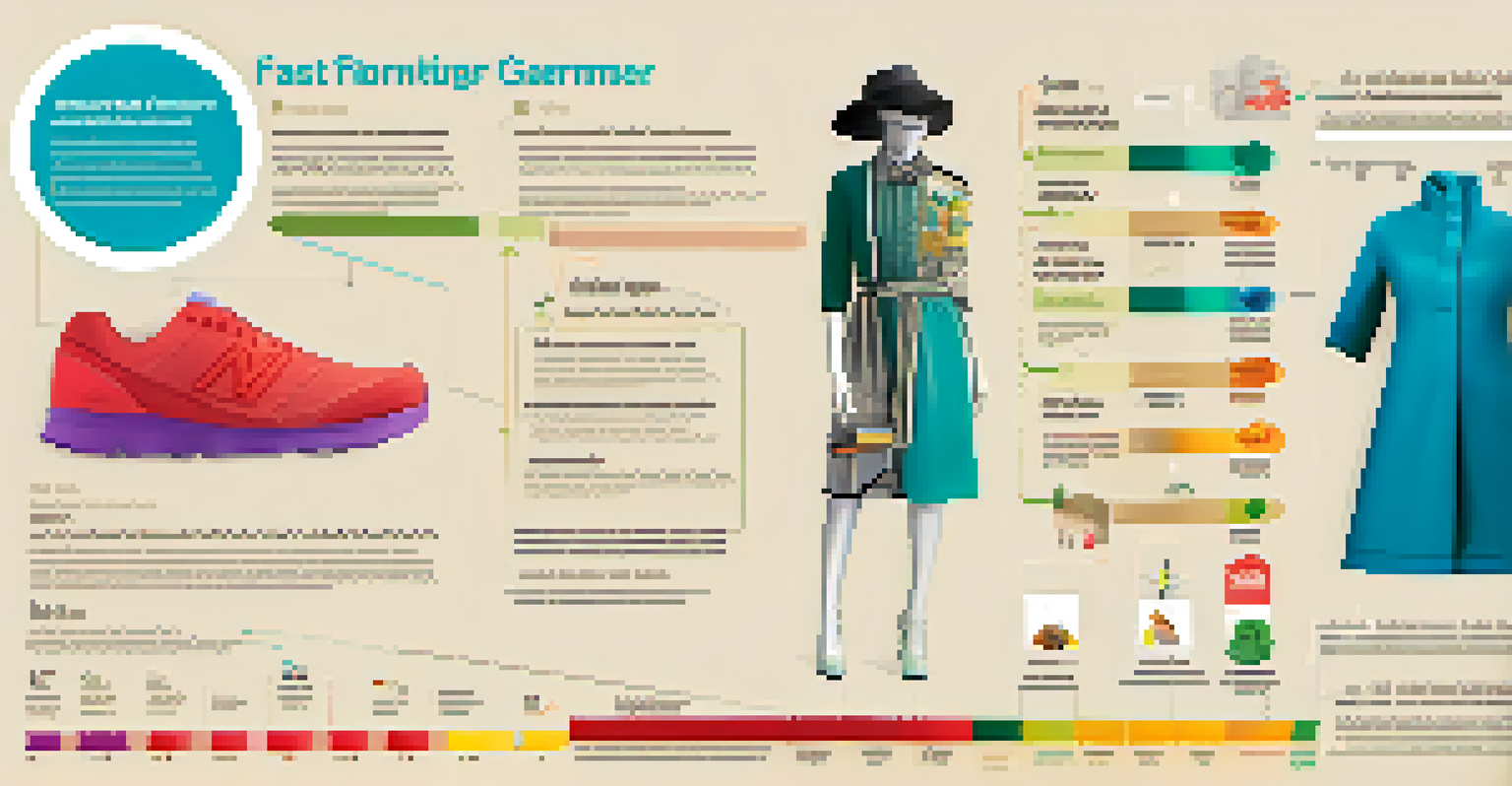Waste Crisis: The Role of Fast Fashion in Textile Pollution

Understanding Textile Pollution and Its Urgency
Textile pollution refers to the environmental damage caused by the production and disposal of clothing. With the rise of fast fashion, this issue has escalated dramatically. Every year, millions of tons of clothing end up in landfills, contributing to a growing waste crisis.
The fashion industry is the second largest polluter in the world, next to the oil industry.
The urgency of addressing textile pollution cannot be overstated. As consumers, we often overlook the environmental footprint of our wardrobe choices. This neglect leads to significant ecological harm, including increased carbon emissions and water pollution.
Recognizing the severity of textile pollution is the first step toward change. By understanding its impact, we can make informed decisions about our clothing purchases and advocate for more sustainable practices in the fashion industry.
Fast Fashion: What It Is and Why It Matters
Fast fashion refers to the rapid production of inexpensive clothing to meet the latest trends. Retailers churn out new styles at breakneck speed, encouraging consumers to buy more and discard items quickly. This model not only promotes overconsumption but also leads to massive waste generation.

The problem with fast fashion lies in its business model, which prioritizes profit over sustainability. Brands often cut corners in production, leading to increased pollution and exploitation of resources. Consequently, the environmental and social costs are often hidden from consumers.
Textile Pollution Urgency
Textile pollution, exacerbated by fast fashion, leads to significant environmental damage, including landfills filled with discarded clothing.
Understanding fast fashion's impact is crucial for consumers who wish to make ethical choices. By recognizing the implications of our shopping habits, we can begin to shift away from this harmful model and support more sustainable alternatives.
The Environmental Toll of Textile Production
The textile production process is notoriously resource-intensive. It requires vast amounts of water, chemicals, and energy, resulting in significant environmental degradation. For instance, producing a single cotton shirt can consume up to 2,700 liters of water, enough for one person to drink for two and a half years.
Clothes aren’t going to change the world, but the people who wear them can.
Moreover, the chemicals used in dyeing and finishing processes often end up in waterways, polluting local ecosystems. This pollution can have devastating effects on marine life and the health of communities living near textile factories. It’s a cycle of harm that continues to perpetuate the waste crisis.
Highlighting the environmental toll of textile production is essential to understanding the broader implications of fast fashion. By raising awareness, we can encourage consumers to think critically about their clothing choices and advocate for cleaner production methods.
The Lifecycle of Fast Fashion Garments
To grasp the waste crisis, it's vital to examine the lifecycle of fast fashion garments. From production to disposal, each stage leaves its mark on the environment. Fast fashion items are often worn just a few times before being discarded, leading to a wasteful cycle.
Once these garments are thrown away, they contribute significantly to landfill waste. In fact, the EPA estimates that around 92 million tons of textile waste are generated globally each year. Many of these clothes take decades to decompose, further exacerbating the pollution crisis.
Fast Fashion's Environmental Impact
The fast fashion model promotes overconsumption and significant waste, prioritizing profit over sustainability and contributing to a growing waste crisis.
By understanding the lifecycle of our clothing, we can make more conscious choices. Whether it’s opting for quality over quantity or embracing second-hand shopping, each decision can help mitigate the environmental impact of fast fashion.
Consumer Awareness: A Key to Change
Consumer awareness plays a pivotal role in addressing the waste crisis linked to fast fashion. As shoppers become more informed about the environmental impact of their purchases, they can choose to support sustainable brands. This shift in consumer behavior can create a ripple effect within the industry.
Social media and digital platforms have empowered consumers to voice their concerns about fast fashion. Activists and influencers are working tirelessly to raise awareness about the consequences of our clothing choices. Their efforts can inspire others to think critically about their shopping habits.
Ultimately, when consumers demand change, brands are forced to adapt. By prioritizing sustainability and transparency, we can push the fashion industry toward a more responsible future.
Sustainable Alternatives to Fast Fashion
Fortunately, there are sustainable alternatives to fast fashion that can help reduce textile pollution. Thrift shopping, for instance, allows consumers to find unique items while giving pre-loved clothing a second life. This practice not only minimizes waste but also promotes a circular economy.
Another option is to invest in quality garments from sustainable brands that prioritize ethical production practices. By choosing durable pieces, we can reduce the frequency of purchases and lower our overall environmental impact. Quality over quantity is a mantra that can lead us toward sustainability.
Embracing Sustainable Choices
Supporting sustainable alternatives, such as thrift shopping and quality garments, empowers consumers to reduce their environmental impact and shift the fashion industry toward responsibility.
Exploring sustainable alternatives empowers consumers to make choices aligned with their values. By supporting brands that prioritize the planet, we can collectively shift the industry toward a more sustainable future.
The Role of Brands in Mitigating Textile Pollution
Brands play a crucial role in addressing textile pollution and shaping consumer behavior. By adopting sustainable practices, they can significantly reduce their environmental footprint. This includes using eco-friendly materials, minimizing waste, and ensuring fair labor practices throughout the supply chain.
Moreover, brands can take the lead in promoting transparency, allowing consumers to understand the origins of their clothing. When consumers are informed, they can make choices that align with their values, creating a demand for sustainability in fashion.

Ultimately, the responsibility lies not just with consumers but also with brands. By committing to sustainable practices, they can help create a fashion landscape that prioritizes the planet over profit.